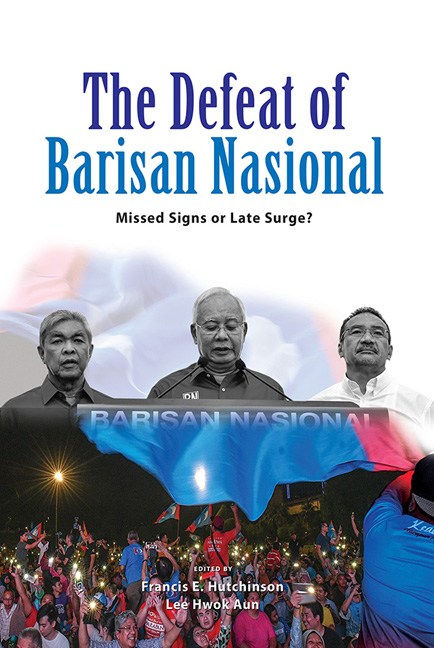8 - From Council Flats to Government Quarters: GE-14 in Urban Malay Constituencies
Published online by Cambridge University Press: 17 April 2020
Summary
INTRODUCTION
In recent years, Malaysia seems to have followed a global trend of countries with long-ruling regimes, in that its urban electorate has increasingly voted for opposition parties. At the same time, a majority of rural Malay voters remained loyal to the ruling coalition, Barisan Nasional (BN). Heading into GE-14, searching questions arose: how would the growing number of Malays in urban areas vote, and what would be the consequences of potentially changing preferences?
There have been several attempts in the past to explain the urban-rural divide in Malaysian elections and their wider implications. One example is a study of the 1986 general election, when the opposition won 29 out of 177 federal seats, with the Democratic Action Party (DAP) alone winning 24 urban seats. This result, namely the concentration of opposition footholds in urban areas, and the Alliance-BN's strongholds in rural districts, led many to talk of a political rural-urban divide in place since the 1960s (Ramanathan and Adnan 1988).
In a follow-up study analysing the 1990 and 1995 general elections, Ramanathan (1996) noted that rural Malay voters on one hand, and urban Malay and non-Malay voters on the other, were divided based on their access to the media—implying that rural Malays were more reliant on government-controlled Malay newspapers like Utusan Malaysia and Berita Harian for information. The same study also noted that in the rural east coast states of Kelantan and Terengganu, the Islamist party, Parti Islam Se-Malaysia (PAS) managed to strengthen its position through the publication and distribution of its party newsletter Harakah.
Most recently, Maznah (2015) discussed the outcome of the 2013 General Elections (GE-13) in urban and semi-urban Malay constituencies in a study of parliamentary seats with Malay agricultural settlements managed by the Federal Land Development Authority (FELDA). In that year's General Election, BN, through UMNO, won six of the eight urban constituencies with FELDA settlements. The other two seats were won by PAS, which was then part of the opposition coalition, Pakatan Rakyat (PR). Regarding Malay-majority urban and semi-urban constituencies, BN won only seventeen of forty such seats in GE-13.
- Type
- Chapter
- Information
- The Defeat of Barisan NasionalMissed Signs or Late Surge?, pp. 191 - 208Publisher: ISEAS–Yusof Ishak InstitutePrint publication year: 2019

